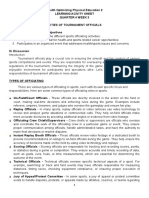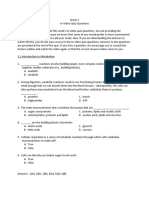0% found this document useful (0 votes)
32 views5 pagesOrganization of Sports Day: Events That Will Take Place
The document outlines the organization of a sports day, including planning, scheduling, roles, materials, and event execution. It details specific events like high jump and shot put, along with their rules, and mentions national games and tournaments conducted in India across various sports. Additionally, it provides historical context about the Olympics and notable facts related to its inception and achievements.
Uploaded by
sanna.lenin18Copyright
© © All Rights Reserved
We take content rights seriously. If you suspect this is your content, claim it here.
Available Formats
Download as DOCX, PDF, TXT or read online on Scribd
0% found this document useful (0 votes)
32 views5 pagesOrganization of Sports Day: Events That Will Take Place
The document outlines the organization of a sports day, including planning, scheduling, roles, materials, and event execution. It details specific events like high jump and shot put, along with their rules, and mentions national games and tournaments conducted in India across various sports. Additionally, it provides historical context about the Olympics and notable facts related to its inception and achievements.
Uploaded by
sanna.lenin18Copyright
© © All Rights Reserved
We take content rights seriously. If you suspect this is your content, claim it here.
Available Formats
Download as DOCX, PDF, TXT or read online on Scribd
/ 5

































































































